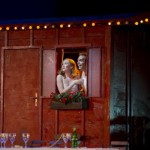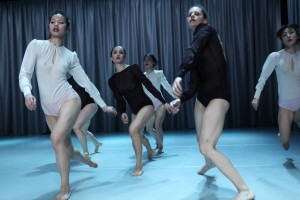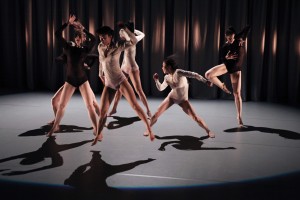By Sedgwick Clark
Last week’s blog (April 24) was written, but for some reason in the posting process didn’t reach this stage. I wrote about the New York Philharmonic’s performance of Stephen Sondheim’s Sweeney Todd, a recital by Murray Perahia, and a Philharmonic concert in which Manfred Honeck deputized for Gustavo Dudamel. It is available now on my list of blogs, reachable by clicking on Why I Left Muncie on the desktop. Herewith a few words on some concerts I heard in April.
First Impressions of SubCulture – April 1
For a time, classical concerts in the downtown, downstairs nightclub Le Poisson Rouge were reviewed often in the Times by Allan Kozinn. But LPR’s visibility lessened when the paper changed his beat from that of critic to reporter. In its stead, a new venue called SubCulture has sprung up. Open for seven months now, it has impressed many as a more acceptable venue for classical music than its model. Both are in Greenwich Village, on Bleecker Street, and some concert impresarios believe they’ll find their future audiences in such places. The ambience is informal, and their modest capacities (150 seats in the case of SubC) allow presentation of lesser-known artists who couldn’t fill Kaufman Auditorium at the 92nd Street Y, for instance, which produced the concert I heard. Drinks are available at the bar but not served by waiters during performances, nightclub style, as is the case at LPR. (The difference is sort of like McDonald’s reducing the fat content of its French fries.) No bother, really, because neither strikes me as an acoustically acceptable concert venue. The main sonic advantage of SubCulture is that its ventilation system is less obtrusive than LPR’s roar.
On this evening, the young Cypress String Quartet played four of Dvorák’s Cypresses and Schubert’s G major Quartet, D. 887, sandwiching the New York premiere of George Tsontakis’s ruminative Sixth Quartet, which only stirred itself into a spurt of energy at its conclusion. Members of the Quartet affably talked about the music before each performance, which is what some presenters think is desirable in connecting with audiences. I would like to welcome the Cypress foursome for the melting European lyricism its players described, but I mainly heard American aggression. Sitting in the fourth row didn’t help; a colleague who moved down to the third row at intermission said that the sound was more flattering in the rear. Intimacy is nice, but it requires a certain refinement.
The quartet’s new recording with cellist Gary Hoffman of Schubert’s Quintet on Avie may offer a kinder perspective.
Heras-Casado’s New York Philharmonic Debut – April 2
The 37-year-old Spaniard Pablo Heras-Casado, principal conductor of the Orchestra of St. Luke’s and Musical America’s Conductor of the Year for 2014, wowed the hard-to-please New York Phil with my favorite program of the year: Britten’s Four Sea Interludes from Peter Grimes, Bartók’s Third Piano Concerto, and Shostakovich’s Tenth Symphony. While I enjoyed the entire well-played concert, Peter Serkin’s solo playing in the Bartók struck me as quite the most expressive, tonally colorful pianism I’ve ever heard from him. Heras-Casado showed himself to be a crack accompanist. I look forward to more Bartók from him.
American Composers Orchestra – April 4
There’s a lot of wonderful, neglected American music that the ACO used to play—by composers like William Schuman, Howard Hanson, Paul Creston, Ned Rorem, Peter Mennin, Morton Gould, and many others. I stopped attending ACO concerts many years ago after they ceased playing such works. I want to know where the new pieces grow out of. So I was happy to hear Silvestre Revueltas’s Alcancías, sort of a wrong-note film score for a western in three movements, and Gunther Schuller’s Contours, his first “third-stream” piece. George Manahan’s conducting struck me as spot on.
I had run into the ACO’s new artistic director, Derek Bermel at the Heras-Casado concert two days earlier and expressed my opinion in no uncertain terms; I strongly hope this concert was no aberration. The New York premiere of Bermel’s own quirky Mar de Setembro, to five mildly sensual poems by Eugénio de Andrade (pseudonym of José Fontinhas), was sung by Luciana Souza with what seemed the worst wobble I’d ever heard. But maybe it was a stylistic choice, for the composer gives “special thanks” to her in his program note, saying that his “collaboration with her has been nothing short of joyful,” so what the hell do I know?
“Destination America” at CMS – April 6
I finally caught up with violinist Daniel Hope, and I assure you that the praise is richly deserved. His equally adept collaborators were clarinetist Romie de Guise-Langlois and pianist Gloria Chien in Bartók’s Contrasts; Guise-Langlois and pianist Wu Han in Ives’s Largo; Wu Han in Prokofiev’s Sonata in D major, Op. 94a; and Chien, violinist Yura Lee, violist Paul Neubauer, and cellist David Finckel in Korngold’s Piano Quintet, Op. 15. Hope’s beautiful tone and Wu Han’s solid rhythmic pulse made the Prokofiev sonata the high point for me. Mahler proclaimed the 10-year-old Erich Wolfgang Korngold “a genius,” but I’ve always thought that Korngold’s Hollywood period redeemed him as a composer. Not even these expert players could save this thick-textured, awkward piece from his mid-20s.
Looking Forward
My week’s scheduled concerts (8:00 p.m. unless otherwise noted):
5/1 Carnegie Hall. Richard Goode, piano. Janáček: On the Overgrown Path, Book I (sel.). Schumann: Davidsbündlertänze. Debussy: Préludes, Book I.
5/2 Carnegie Hall. Philadelphia Orchestra/Yannick Nézet-Séguin, conductor; Lisa Batiashvili, violin. Barber: Adagio for Strings. Bartók: Violin Concerto No. 1. Bruckner: Symphony No. 9.
5/5 Carnegie Hall at 7:30. Spring for Music. New York Philharmonic/Alan Gilbert; Jacques Imbrailo, baritone; Westminster Symphonic Choir; Brooklyn Youth Chorus. Christopher Rouse: Requiem (N.Y. premiere).
5/6 Carnegie Hall at 7:30. Spring for Music. Seattle Symphony/Ludovic Morlot. John Luther Adams: Become Ocean (N.Y. premiere). Varèse: Déserts. Debussy: La Mer.
5/7 Carnegie Hall at 7:30. Spring for Music. Rochester Philharmonic/Michael Christie; singers from the Eastman School of Music Opera Department. Hanson: Merry Mount (complete concert performance).
5/8 Avery Fisher Hall at 7:30. New York Philharmonic/Bernard Haitink; Leonidas Kavakos, violin. Webern: Im Sommerwind. Berg: Violin Concerto. Beethoven: Symphony No. 3 (Eroica).






